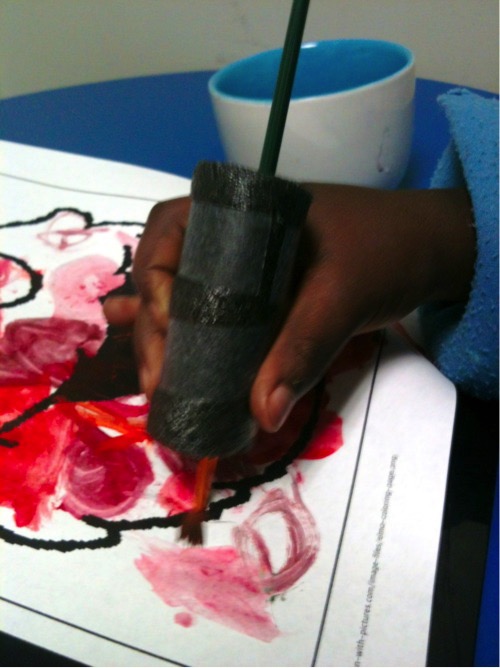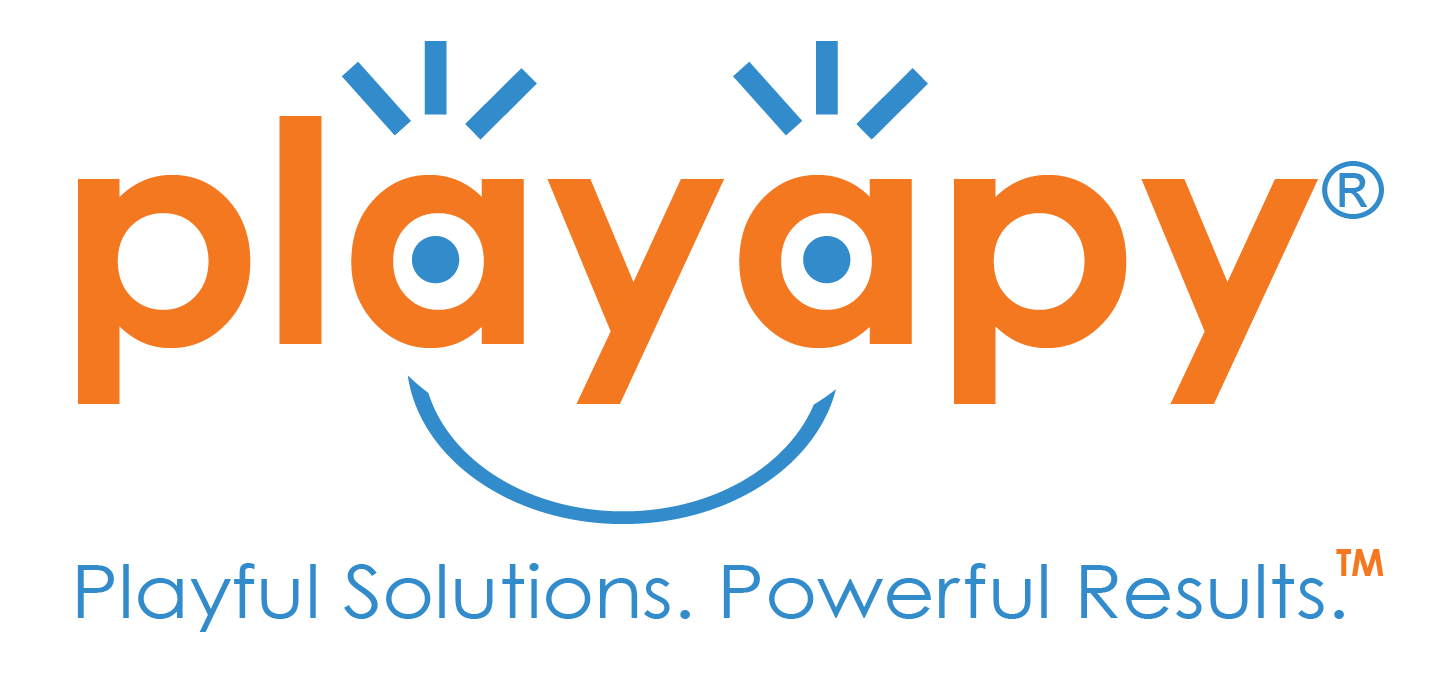
21 Apr Home Adaptation for Immature Grasp
Ever wonder if there is a quick home adaptation to help your child improve how he or she holds objects when painting, drawing, or coloring. After working with hundreds of children, I have seen a child hold an object in every way you could possibly imagine. Sometimes it takes a simple pencil grip to make things better. Sometimes it takes a little more creativity especially when you’re working with a child with more complicated concerns. Here is my attempt to capture a series of photos from a painting session with a child with autism who has immature grasping skills. I hope this provides some insight into how you can simply make some adjustments to make play easier and more beneficial with everyday items you may already have in your home.
Child’s Grasp of a Thin Paint Brush Before Adaptations

Notice that the child’s arm is off the table and the brush is being held at the far end of the brush with fingers straight. This does not allow the child to use the small muscles of the hand to paint. Instead the child is using his shoulder to guide the motion. Therefore it would be difficult to paint with any accuracy. The hand is also closed increasing the tension in the hand and preventing the tiny joints of the fingers from bending and assisting. This could tire out a small hand very quickly.
Child’s Grasp with an Adaptation to the Paint Brush

Notice the child’s grasp has improved when a piece of foam tubing is placed around the brush to make it thicker. You can find foam tubing in any home repair store. It is usually used to place around pipes. This one is cut and taped around the paintbrush. This allows for the child to open up the space between his thumb and index finger. It also allows for a greater surface area for the fingers and for the thumb to be bent and capable of assisting. The wrist, however, is still raised and poorly positioned, so the shoulder is still doing the work instead of the hand.
Child’s Grasp After Brush Adaptation & Added Weight

Notice the child’s wrist is now lowered to the table when a 2lb. weight is strapped to the wrist. This is done to lessen the use of the large muscles of the arm and encourage the use of the small muscles in the hand and wrist. This is a way to improve the grasp and position of the wrist for a short period of time. Ideally, the muscles of the hand become accustomed to the new position, begin to function properly, and recall through muscle memory in future play opportunities. If you don’t have a weight, you can also hold it down yourself or encourage the child to lie down on his tummy so that his elbows are holding down most of the arm and gravity can assist gradually with lowering the wrist.
Child’s Grasp After Adaptations Have Been Removed

Notice the child’s grasp has improved after practicing with adaptations. The brush was placed into the child’s hand, but he did not alter the grasp and lowered his elbow independently. The input from the weight apparently is still giving a positive effect even though it has been removed. The wrist remains raised but shows potential for improvement with continued practice.
Remember that there are no rules to creativity. If your child is demonstrating delays you have not been able to improve on your own, you should seek the advice your pediatrician and possibly seek an occupational therapist for treatment. I hope you found these tips helpful. Have a playful day!
Amy Baez, MOT, OTR/L
Amy Baez is a pediatric occupational therapist, award-winning author, and Founder of Playapy. For more information about Playapy and its PALS Handwriting Program, visit www.playapy.com or email [email protected].
